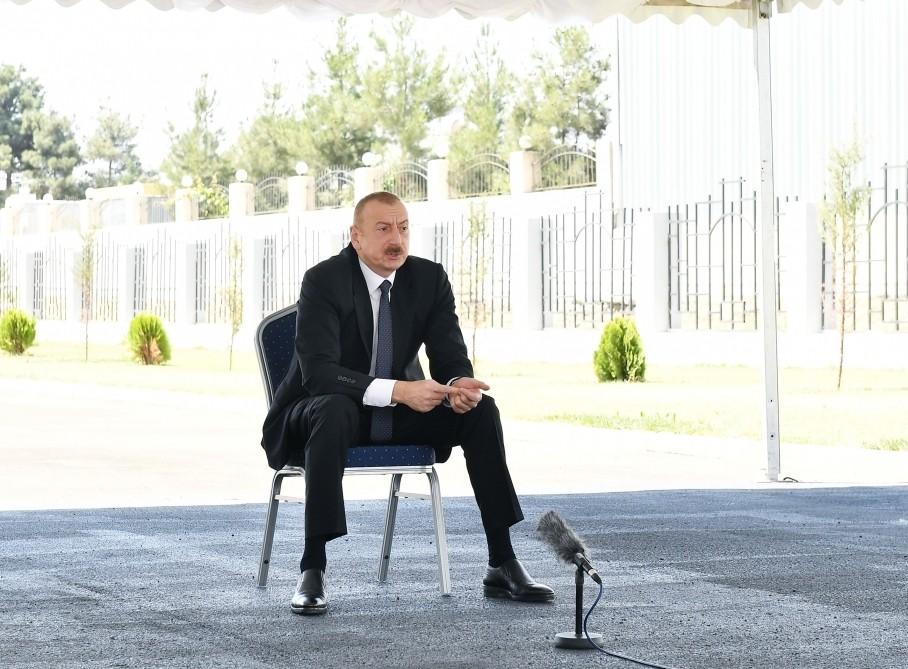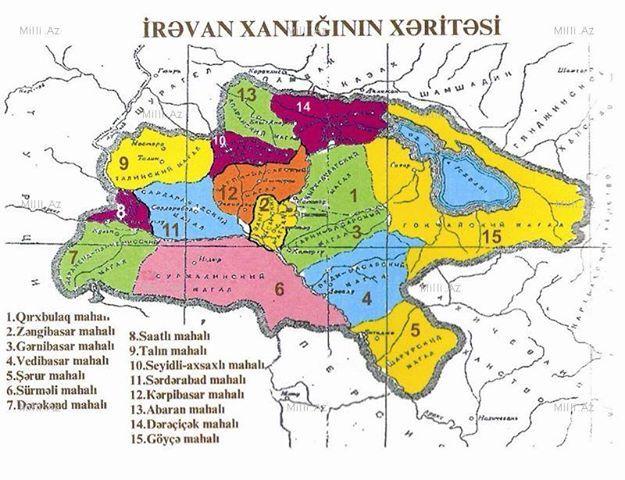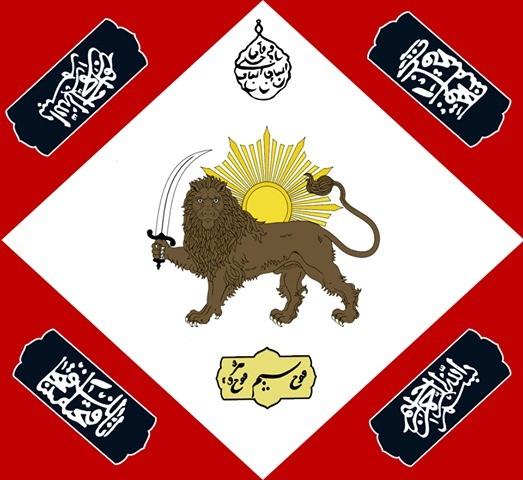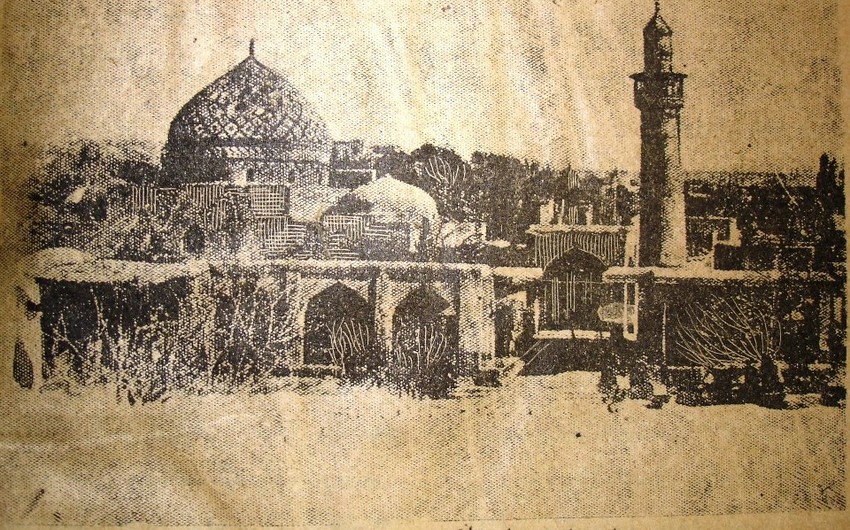One hundred two years pass since the occupation of Iravan, which marks the beginning of the Armenian invasion of the Azerbaijani territories. In other words, the annexation does not start with the seizure of Karabakh.
During a meeting with a group of athletes following the inauguration of the Tartar Olympic Sports Complex on June 3, Azerbaijani President Ilham Aliyev spoke about the occupation of Azerbaijani lands and its causes.
The head of state highlighted the territorial concessions Azerbaijan made to Armenia, hinting at no more compromise to the Armenians.

"The names of Azerbaijan's historical cities and villages in the territory of present-day Armenia have been changed. In what year were these names changed? When we say that the history of present-time Armenia was created on the Azerbaijani territory, we are telling the truth. We are well aware that following the Russo-Persian wars, Armenians were relocated to our land, including present-day Armenia, in the early 19th century. The Azerbaijani people, as well as Tartar residents, are well aware that in 1978, a monument was erected in a village in the former Nagorno-Karabakh Autonomous Region to commemorate the 150th anniversary of the arrival of Armenians in the region. When we subtract 150 from 1978, it became evident that they arrived just in 1828. As soon as the war broke out, they destroyed the monument, but its ruins remain, and now anyone can visit and see it. Its photos should also be revealed. They are immigrants, and they have been relocated to our lands from Eastern Anatolia and Iran. This process started in the early 19th century and became more widespread later. When I say that Iravan is our ancient land, that is quite true," Aliyev said.
The President stressed that Armenians did not give up their territorial claims in return for the concessions.
"Supposedly, they would quit claims against Azerbaijan. But did they? Never! Our ancient land Zangazur was also given to Armenia, which caused the geographical division in the Turkic world and deprival of the main part of Azerbaijan of the border with Turkey. The Nakhchivan Autonomous Republic is the only Azerbaijani region bordering Turkey. Did Armenians give up their territorial claims, and Iravan was handed over to them? What about the Nagorno-Karabakh conflict? Still a land claim.
With this message, the President highlights several issues. The mediators and Armenian patrons who try to disguise themselves are always talking about mutual privileges. The head of state reminds them of the 102-year-old historical compromise and further Armenian claims to Azerbaijani lands. Due to those concessions and protection of Armenians, a state called "Armenia" was established in Azerbaijani lands.
In his speech, the President also addressed those who intend to create a second Armenian state in the Azerbaijani territory. Notifying the world community, and interested external forces, especially the OSCE Minsk Group co-chairs of the truth that not only Karabakh but also Iravan, Goycha, Zangazur regions, the former territories of the Iravan Khanate are the historical lands of Azerbaijan, is a powerful tool of pressure against Armenia. These realities are the principled response of Azerbaijan, based on scientific-historical and political-legal evidence, to the groundless claims of the Armenian side to Karabakh and other ancient Azerbaijani lands," the head of state emphasized.
Armenia is one of the states built for non-aboriginal ethnic groups, during the First World War. One of the main goals of the great powers of that time was to divide the two Turkic empires - the Ottoman and Ghajar states and create small nations that would meet their interests. Afterward, several countries in the Middle East, including Iraq and Syria, appeared on the world's political map.
Armenia was among them as well. Those who settled the non-aboriginal Armenians in the Caucasus established a state for them 90 years later.
After being settled on the Azerbaijani lands, they started to appropriate those territories, changed the names of places. Iravan is located on the banks of the Zangi River on the northern side of the Agri valley, at an altitude of 850-1,300 meters above sea level. The city was the center of Chukursad province, the Iravan Khanate, and the Iravan governorate.

Let us take a look at the place names in Iravan city before that date. Here are some toponyms used by many travelers talking about Iravan fortress: Shilashci, Sabinchu, Boyagchi, Tokhmag, Tapabashi, Damirbulag, Baghchalar, Yonjalig, Borku settlements, Dalmabulag, Girkhbulag, Sardar springs, Gederchay, Zangi rivers, Dara mountain, Darakand, Shahar, Fahla, Boyuk squares, Goy mosque, Gala mosque, Haji Bayim mosque, Zal khan, Gunluklu, Gunbazli, Shahar, Novruzali and Huseynali mosques, and historical settlement names such as Tapabashi, Damir Bulag, Tokhmag, Sabunchu, Yonjalig, Borkchular, Zal khan square, Ganli tepe, Uch tepe, Gizil tepe, etc.
The Iravan Khanate consisted of 15 districts such as Girkhbulag, Zangibasar, Vedibasar, Sardarabad, Goycha, Darachichek, Abaran. The facts that The Dalma gardens, which occupied large areas in historical Iravan and always owned by Turks, the Dalma hills near Hasanli village in southern Azerbaijan bear traces of cultural life dating back 6,500 years ago, are noteworthy in terms of reflecting the common features of the kindred tribes, their language, and homeland.
Undoubtedly, it is Russia, which created Armenia and established a state for the Armenians in the occupied territories. From this point of view, the region where Armenia was created is the land of the Gajar Turkic (Azerbaijani) state, which was occupied by Tsarist Russia 182 years ago. No historical source from that period or earlier states that Armenians lived or owned lands in these areas. In 1828-1830, an estimated 40,000 Armenians were relocated to the South Caucasus from Iran and 84,000 from Turkey. In 1893-1895, nearly 900,000 Armenians moved to present-day Armenia.
Hence, Armenia was founded in the occupied territories. The book "Armenian acts of cultural terrorism" by Jafar Giyasi and Ibrahim Bozyel states that Armenians were the people displaced to the area of present-day Armenia by the middle of the last century and they confirm that Azerbaijanis used to live there as ethnic people. Only in the early 20th century, about 2,000 geographical names out of 2,310 in Western Azerbaijan (present-day Armenia) were of Turkish origin.
The first geographical renaming took place in 1801. In the first phase, the Russian occupation of the territory and the mass resettlement of Russians led to the replacement of the names of Turkish origin by Russian toponyms. Here are some examples of Turkish names in present-day Armenia, which were changed in 1918-1920:
Molla Dursun - Shaumyan (Echmiadzin), Yukari Agdam - Ganzakar (Ijevan), Tamamli - Burastan (Artashat), and others. This process lasted during the existence of the USSR. The method of changing toponyms in the Armenian SSR was closely connected with that period's internal political processes in the USSR. During 1924-1930, nearly 80 toponyms were altered in Armenia.
The increasing number of Armenians who migrated to the Armenian SSR from the Middle East, Eastern Europe, and the United States in 1946-1948 caused a further acceleration of geographical renaming after the Second World War (1946-1950). Over these years, nearly 90,000 Armenians were relocated to Western Azerbaijan.

Another reason that led to the change of place names was the mass deportation of Azerbaijanis from Armenia. The decree No 745 dated March 10, 1948, approved by the USSR Council of Ministers provided for the removal of an estimated 10,000 Azerbaijanis from Armenian SSR in 1948, 40,000 in 1949 and 50,000 in 1950 to the Kur-Araz lowlands of Azerbaijan.
The Armenianization of toponyms in Karabakh continued even after the occupation of Karabakh. For example, Agdam was renamed to Akna, Khojaly to Ivanyan, Gubadli to Sanasar, Lachin to Berdzor, Kalbajar to Karvachar, Jabrayil to Jrakan. Some of them were partially changed, and others were just translated into Armenian. Even they inscribed the name of Azerbaijan's second-largest city Ganja as Gandzak, Barda as Partav, Kapaz Mountain, as Alparak in their maps.
During the USSR, Armenians were under the patronage of the central government as in Tsarist Russia. For instance, in 1969, a part of Garagol area of Lachin, Chayzami area of Gubadli, a portion of Gazakh region, as well as Injadara plateau, Kamarli, Aslanbeyli, Kayinagli villages, and some area of Zod gold mine of Kalbajar district were given to Armenia by the decision of Moscow leadership. In December 1985, the 22nd Congress of the Dashnaktsutyun Party in Athens decided to extend the struggle for "Greater Armenia." In response, in 1986, by the decision of the Moscow authorities, 2,500 hectares of the Gazakh region were bestowed upon Armenia.
Do Armenians act alone, without any help?! Of course not. Thus, those who placed them in the Azerbaijani territory fortify their stronghold by this means. The forces and states show interest in the Armenianization of the occupied territories. Therefore, those states' "media," "history books," and "maps" first publish those changes. In this way, the Armenians and their patrons are preparing a fake source for the future.
By assisting in portraying Armenians as aborigines in the Caucasus, they tend to strengthen themselves.
The collapse of the USSR sparked a change of guidance of Armenia. Abel Aganbegyan, Soviet leader Mikhail Gorbachev's economic adviser, gave its first hint in his interview to Paris-based newspaper L'Humanité on November 16, 1987. He claimed that he had persuaded Gorbachev to hand over Nagorno-Karabakh to Armenia.
Four years since that speech, the USSR collapsed, and the number of interested forces in the region increased. With the assistance of Moscow, the Azerbaijani lands were again subjected to the occupation. The US sanctions targeted Azerbaijan, which is willing to liberate its lands. In 1992, the US Congress passed the Freedom Support Act, which prohibited US government assistance to Azerbaijan. The amendment to the law called for ending the "occupation" of Nagorno-Karabakh by Azerbaijan and the blockade against Armenia. The bill was introduced by Senator John McCain and Congressman Wayne Owens (Utah). Senator Richard Lugar (Indiana) opposed the amendment. Moreover, former US Vice President and current presidential candidate, Joe Biden, strived to achieve the bill's approval and, many times opposed its repeal.

After the events of September 11, 2001, the US Congress authorized the President to suspend the amendment to provide support in Azerbaijan's fight against international terrorism.
Those who organized the settlement of Armenians in Azerbaijan 192 years ago, who pave the way for Iravan to be chosen as the capital of Armenia 102 years ago, who provided assistance for the deportation of Azerbaijanis from Western Azerbaijan 80 years ago and later, who supported the occupation of Karabakh in every way, who committed the Khojaly genocide, who turned a blind eye to the holding of "elections" in Karabakh by the separatists, and giving the occupiers a pat on the back still dominate the world politics.
It turns out that the conditions have not changed. Those forces play a leading role in the world political scene as well. It is those forces that hamper the liberation of Azerbaijani lands from occupation.
They created Armenia on the Azerbaijani territories. Those powers pave the way for the spread of lies in these lands. Now they have also succumbed to these lies. Their salvation from that deception depends on the liberation of Azerbaijani territories from occupation. As long as those forces support lies and fraud, they will make bigger mistakes, which will hinder their freedom and impartiality. That means they will fail to be a fair and impartial mediator. Although they try to cover it up, all can distinguish right from wrong. Just like the truth, that Iravan is an Azerbaijani city!


 https://static.report.az/photo/652488b8-15c3-49cc-a608-974f76a0b0ca.jpg
https://static.report.az/photo/652488b8-15c3-49cc-a608-974f76a0b0ca.jpg

